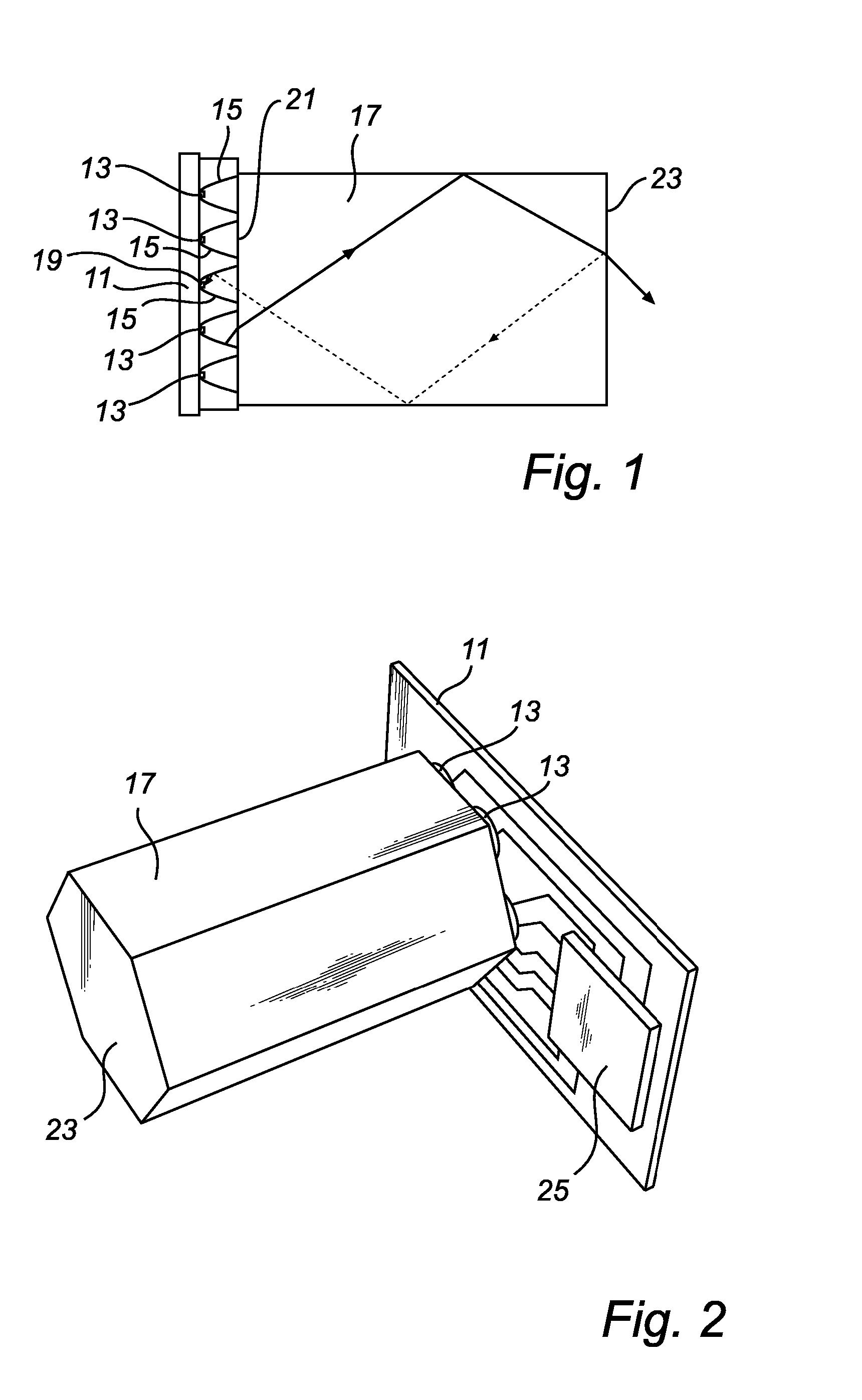Feedback controlled illumination system having an array of leds, and a detector among the leds
- Summary
- Abstract
- Description
- Claims
- Application Information
AI Technical Summary
Benefits of technology
Problems solved by technology
Method used
Image
Examples
Embodiment Construction
[0025]As shown in FIG. 1, one embodiment of the illumination system comprises a PCB (Printed Circuit Board) 11, an array of LEDs 13, where the LEDs 13 are positioned symmetrically on the PCB 11, a plurality of collimators 15, a light mixing element 17, and a detector 19, which is arranged within a light shield 15. The light shield shields the detector 19 from direct light from neighbouring LEDs 13 while admitting light that has been reflected internally of the mixing element 17 as will be further explained below. Each LED 13 is arranged in, and thus encircled by, a separate one of the collimators 15. Thus, one collimator 15 is provided for each LED 13. However, there is one more collimator 15, which is used as the light shield for the detector 19. In principle, the detector can be placed in any one of the collimators 15 without consequences for the correct functioning. However, to obtain the shortest possible light mixing element 17 it is advantageous to distribute the various LEDs ...
PUM
 Login to View More
Login to View More Abstract
Description
Claims
Application Information
 Login to View More
Login to View More - R&D
- Intellectual Property
- Life Sciences
- Materials
- Tech Scout
- Unparalleled Data Quality
- Higher Quality Content
- 60% Fewer Hallucinations
Browse by: Latest US Patents, China's latest patents, Technical Efficacy Thesaurus, Application Domain, Technology Topic, Popular Technical Reports.
© 2025 PatSnap. All rights reserved.Legal|Privacy policy|Modern Slavery Act Transparency Statement|Sitemap|About US| Contact US: help@patsnap.com



